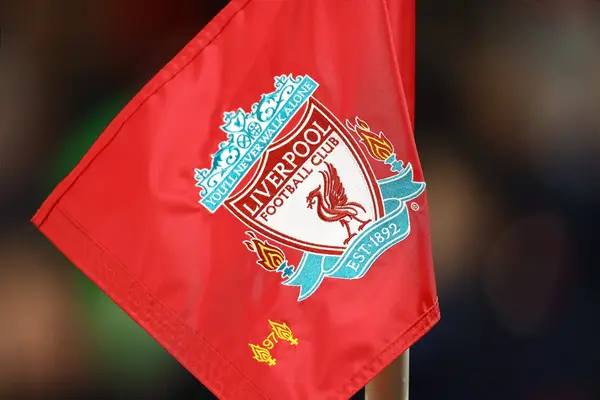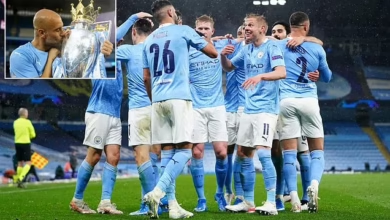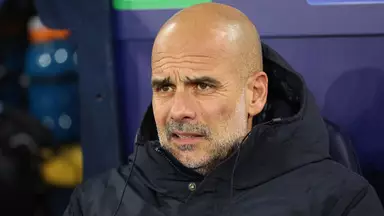The Evolution of Football Transfers: Analyzing Market Dynamics in the Modern Era

The modern football transfer window has evolved into a spectacle that rivals the sport itself in terms of public interest and media coverage. What once was a relatively simple process of clubs buying and selling players has transformed into a complex ecosystem of agents, analytics, financial regulations, and global marketing considerations. As we examine the current state of the transfer market in 2025, several key trends and dynamics have emerged that are reshaping how clubs approach player acquisition and squad building.
The transfer window has become football’s “second season,” generating headlines, driving social media engagement, and influencing club strategies in ways that extend far beyond the pitch. This comprehensive analysis explores the multifaceted nature of modern transfers, examining everything from financial fair play regulations to the role of data analytics in player valuation.
The landscape of football transfers has been fundamentally altered by the implementation and evolution of Financial Fair Play (FFP) regulations. UEFA’s FFP rules, now complemented by the Premier League’s Profit and Sustainability Rules (PSR), have created a complex web of financial constraints that clubs must navigate when pursuing transfer targets.
These regulations have forced clubs to become more strategic in their transfer approach. No longer can wealthy owners simply inject unlimited funds into their clubs; instead, teams must balance their books through a combination of player sales, commercial revenue growth, and careful wage management. This has led to the emergence of what we might call “creative accounting” in the transfer market, where clubs structure deals in innovative ways to comply with regulations while still pursuing their targets.
The impact of these rules varies significantly across different leagues and club situations. Premier League clubs, with their substantial television revenue, often find themselves in stronger positions than their European counterparts, but even they must carefully manage their spending. Meanwhile, clubs in leagues with lower commercial revenues have had to become increasingly creative in their approach to squad building.
Modern transfers rarely involve simple upfront payments. Instead, clubs have developed sophisticated financing structures that spread costs over multiple years while managing cash flow and regulatory compliance. These structures include:
Performance-based payments: Clubs increasingly tie transfer fees to specific achievements, whether individual (appearances, goals, assists) or collective (league position, Champions League qualification, trophy wins). This allows selling clubs to potentially maximize their returns while giving buying clubs some protection against underperformance.
Loan-to-buy arrangements: These have become particularly popular among clubs operating under tight financial constraints. They allow teams to assess players over extended periods while deferring major financial commitments.
Player exchange deals, While historically rare, player swaps have become more common as clubs seek to manage their books while still acquiring talent. These deals can be particularly attractive when both clubs face similar financial pressures.
Amortization strategies The accounting treatment of transfer fees, spread over the length of a player’s contract, has become a crucial consideration in transfer planning. Clubs now actively manage their amortization schedules to maintain compliance with financial regulations.
The influence of data analytics on football transfers cannot be overstated. What began with basic statistics has evolved into sophisticated analytical frameworks that examine everything from expected goals and progressive passes to heat maps and pressure metrics. Clubs now employ teams of data scientists alongside traditional scouts, creating a hybrid approach to player evaluation.
Modern analytics platforms can assess players across multiple dimensions simultaneously, creating comprehensive profiles that help clubs identify undervalued talent and avoid expensive mistakes. This has democratized talent identification to some extent, allowing smaller clubs with limited scouting networks to compete more effectively in the market.
The most successful clubs have learned to combine traditional scouting with data analysis, using each to validate and enhance the other. This dual approach helps address the limitations of both methods: data can miss intangible qualities like leadership and mentality, while traditional scouting can be influenced by bias and limited sample sizes.
The sophistication of football analytics has reached unprecedented levels. Expected Goals (xG) and Expected Assists (xA) are now considered basic metrics, with clubs delving into far more complex measurements:
Progressive actions: Metrics that measure how effectively players move the ball toward the opponent’s goal, providing insights into their contribution to attacking play beyond traditional statistics
This analytical revolution has also extended to contract negotiations, with performance bonuses increasingly tied to specific metrics rather than traditional achievements. Players and agents have had to adapt, becoming more sophisticated in their understanding of data and its implications for career development.
## The Psychology of Modern Transfers
### Player Power and Social Media Influence
The relationship between players and clubs has fundamentally shifted in the social media age. Players now have direct communication channels with fans and the media, allowing them to influence transfer narratives in unprecedented ways. Social media posts, interviews, and even tactical decisions like refusing to train can create pressure that forces clubs’ hands in transfer situations.
This player empowerment has created new dynamics in transfer negotiations. Clubs must now consider not just the sporting and financial aspects of deals but also the potential for public relations disasters if situations are mishandled. The most successful clubs have learned to manage these relationships proactively, maintaining open communication with players and their representatives even when transfers seem unlikely.
The role of agents has also evolved significantly. Modern agents operate as comprehensive career managers, handling everything from transfer negotiations to brand development and social media strategy. The most powerful agents wield significant influence over the transfer market, often orchestrating complex multi-club deals that benefit their extensive client networks.
Modern football has begun to recognize the psychological challenges associated with transfers, particularly for younger players moving between different countries and cultures. The pressure to succeed immediately, combined with adaptation challenges, has led to an increased focus on psychological support and cultural integration programs.
Clubs are investing more resources in helping players and their families adapt to new environments. This includes language training, cultural orientation programs, and ongoing psychological support. The recognition that successful adaptation contributes directly to on-field performance has made these investments more attractive from a purely business perspective.
The timing of transfers has also become a psychological consideration. Clubs increasingly prefer to complete deals early in transfer windows, allowing players maximum time to integrate with new teammates and tactical systems before competitive action begins.
The Premier League’s financial advantage over other European leagues has created a somewhat distorted global transfer market. English clubs’ ability to offer significantly higher wages and transfer fees has created a gravitational pull that affects player movement worldwide.
This financial dominance has forced other leagues to adapt their strategies. La Liga clubs have focused on developing and selling young talent, while Serie A teams have emphasized tactical innovation and loan markets. The Bundesliga has maintained its focus on youth development and efficient operations, though even these approaches face challenges from Premier League wealth.
The ripple effects extend beyond Europe. South American clubs, traditionally significant players in the global market, have found their best talents increasingly moving to Europe at younger ages. This has accelerated the development of youth academies and changed the economic models of clubs in these regions
Brexit has had lasting effects on the transfer market, particularly affecting the movement of players between the UK and Europe. The new work permit requirements have made it more difficult for young European players to move to English clubs, while also affecting the loan market that many clubs relied upon for player development.
These changes have forced English clubs to be more creative in their approach to young talent acquisition. Some have established satellite clubs in Europe, while others have increased their focus on domestic academies and non-European markets. The long-term implications of these changes are still unfolding but have clearly altered traditional transfer patterns.
Modern clubs increasingly view their academies not just as sources of future first-team players but as crucial components of their financial strategies. The ability to develop and sell young talent has become essential for maintaining financial health, particularly under current regulatory frameworks.
The most successful academy programs combine world-class facilities with sophisticated development pathways that prepare players for professional football. This includes not just technical and tactical training but also education, psychological development, and life skills preparation.
The global nature of modern academies has also created new dynamics. Clubs now scout internationally for young talent, often investing significant resources in players who may not reach the first team but could generate substantial transfer fees. This has created ethical concerns about the treatment of young players and led to increased regulation of youth transfers
Some leagues have introduced B team systems or development leagues to bridge the gap between academy and professional football. These initiatives aim to provide young players with competitive experience while maintaining their connection to their parent clubs.
The success of these programs varies significantly by region and implementation, but they represent recognition that traditional loan systems may not adequately serve player development needs. The competition between clubs to create the most effective development pathways has intensified, with implications for both player welfare and transfer market dynamics.
The digitization of scouting has accelerated dramatically, with clubs using video analysis platforms, database systems, and even artificial intelligence to identify potential targets. These tools allow scouts to analyze thousands of players across multiple leagues simultaneously, dramatically expanding the pool of potential targets.
Virtual reality and advanced video analysis are being used to assess players in situations that traditional scouting might miss. This technology is particularly valuable for evaluating players in less accessible markets or during periods when travel is restricted.
The democratization of video content has also changed how clubs present players to potential buyers. Professional highlight reels, tactical analysis videos, and comprehensive statistical breakdowns have become standard tools in transfer negotiations.
Some organizations are exploring blockchain technology to create more transparent and secure transfer processes. These systems could potentially reduce fraud, streamline paperwork, and provide better tracking of transfer-related payments. While still in early st














